Social Emotional Learning Teaching Resources
Are you on the hunt for social emotional learning activities, printable PDFs, and more to bring SEL to life in your primary lessons this school year? The list of academic benefits of SEL instruction is a mile long, and the Teach Starter teacher team has created a robust collection of social and emotional learning resources made with teachers – and your students — in mind.
We've made planning your social-emotional learning lessons simple with printable SEL worksheets and digital social and emotional activities designed specifically for the needs of primary school students. Each resource in this collection has undergone rigorous review by the expert teachers on our team to make sure you'll be comfortable passing them out in the classroom or sending them home in a student's bag.
Pardon us if we're sharing something you already know (feel free to skip right to the social emotional learning activities!), but if you're new to incorporating SEL into your classroom, you may need a quick refresher! Read on for a guide from our teacher team!
What Is Social-Emotional Learning?
The most common social-emotional learning — or social and emotional learning — definition describes SEL as 'the process through which all young people and adults acquire and apply the knowledge, skills, and attitudes to develop healthy identities, manage emotions and achieve personal and collective goals, feel and show empathy for others, establish and maintain supportive relationships, and make responsible and caring decisions.'
It's a bit of a mouthful, but essentially social and emotional learning covers five core competencies:
- Self-Awareness
- Self-Management
- Social Awareness
- Relationship Skills
- Responsible Decision Making

Where Did Social Emotional Learning Come From?
Teachers have been teaching many of the skills that now fall under the social and emotional learning curriculum for centuries. It's always been our goal to help shape little minds to be caring, productive, and engaged citizens.
But the roots of what we now consider SEL can be traced back to a project in the New Haven, Connecticut schools in the United States where school administrators worked with Yale University researchers, parents, mental health workers and teachers to refocus not just the school's academic programs but their social ones too. The project started in the 1960s at two schools considered 'underperforming,' and by the 1980s, these same schools had academic scores that were at the top of American school rankings.
From there, the K-12 New Haven Social Development program was born, establishing a framework for incorporating social and emotional learning into the curriculum. Meanwhile, the non-profit Collaborative for Academic, Social, and Emotional Learning (CASEL) was born in 1994, helping to really bring the term 'social and emotional learning' into the zeitgeist.
CASEL was born out of the New Haven projects and helped shape the official definition of SEL listed above in 1997. It now works to expand SEL in schools around the globe.
Why Is Social-Emotional Learning Important?
Not sure you have time to fit all of this in alongside the standards that you're preparing students to meet? A solid social and emotional learning curriculum will help students with everything from managing emotions and developing coping skills to setting positive goals, engaging in positive relationships and solving problems effectively — all important competencies for your classroom.
The importance of SEL is hard to overstate, but here are a few core benefits:
- Promote mental health and well-being — Teaching social and emotional lessons in the classroom can help students develop the skills they need to manage their emotions, build positive relationships and cope with stress and challenges. It's a small step toward better mental health for all.
- Improve academic performance — There's strong research showing that students who have strong social and emotional skills are more likely to be engaged in learning and perform better academically.
- Create a positive classroom culture — Teaching social and emotional lessons can help create the kind of classroom culture where students feel safe, respected and supported — exactly what we all strive for!
- Prepare students for life after school — Social and emotional skills are essential for success beyond the classroom, be it at home in the immediate future or in uni or the workforce. Teaching these skills helps students be better equipped to handle the challenges they will face.
- Address specific social and emotional needs — Teaching social and emotional lessons can help address students' specific needs, such as building self-esteem, managing emotions and developing empathy for others. This can also help to create a more inclusive and equitable classroom where all students feel respected and valued. It's also good for your overall classroom management.

How to Teach Social and Emotional Lessons
There's little question that there's value in social and emotional learning, but how do you actually teach it? There's no simple answer here, as the exact methodology will differ based on year level, individual student needs and even your classroom dynamics!
That said, here are some strategies from our teacher team to keep in mind as you consider how you're incorporating the components of SEL in your instruction:
- Modelling — This is likely no surprise — we are our students' role models in the classroom for so much. Don't underestimate the value of your own active listening, displays of empathy and self-regulation, and other skills that are essential for your students' social and emotional development.
- Classroom Culture — Establishing a safe and supportive learning environment where students feel respected, valued and empowered goes a long way. Fostering a sense of community, promoting positive communication and encouraging collaboration and teamwork are all helping kids build their SEL quotient!
- Integration — Of course, you can (and should) have explicit instruction on SEL, but you can also incorporate SEL concepts into your core subject lessons. Discuss emotions related to a character in a book or working on group projects that require collaboration and communication. If you're teaching maths, emphasise the importance of perseverance and problem-solving skills. Teaching HAAS? Discuss empathy and the ability to understand different perspectives. It all comes together!
- Plus Plan
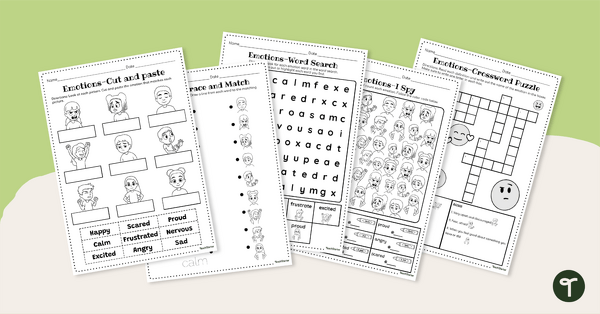
Emotions Worksheet Set
Help students understand different emotions with this set of five emotions worksheets.
- Free Plan

Conflict Resolution Template
Manage classroom and playground conflicts positively and proactively with this conflict resolution template.
- Plus Plan

Pangolin Mindful Colouring In Sheet
A pangolin mindful colouring in sheet.
- Plus Plan
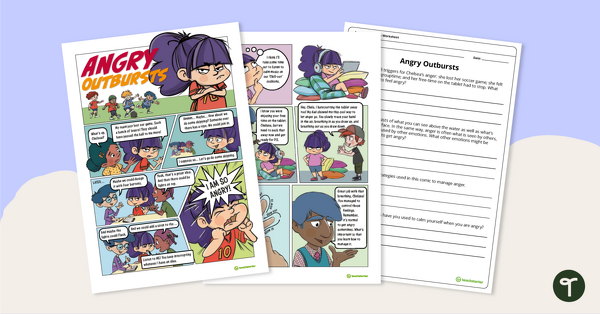
Angry Outbursts – Comprehension Worksheet
Explore emotional awareness and healthy calming strategies with this comic-style comprehension passage and accompanying questions.
- Plus Plan

Rhino Mindful Colouring In Sheet
A rhino mindful colouring in sheet.
- Plus Plan
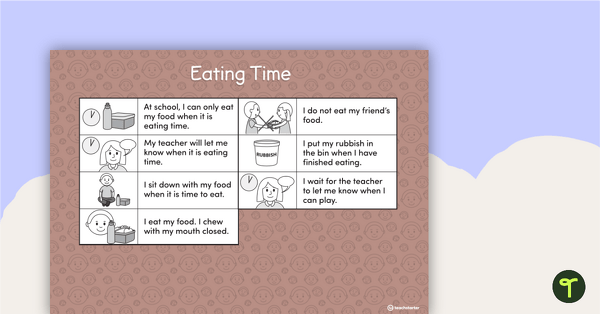
Time To Eat – Lunch Procedures Mini Book
Teach your students appropriate lunch procedures with a printable Time to Eat Social Stories booklet.
- Plus Plan
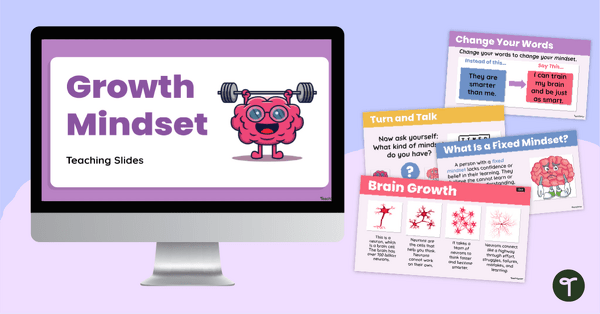
Growth Mindset PowerPoint
Help your students develop a growth mindset with a Growth Mindset Teaching Slide Presentation.
- Plus Plan
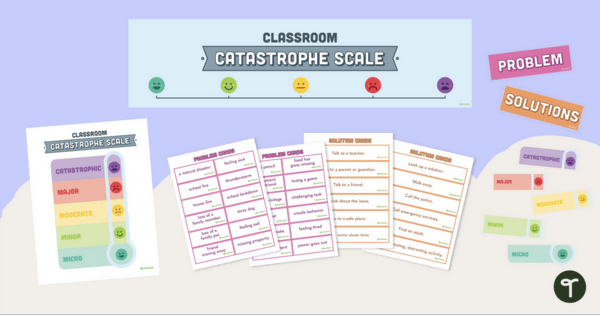
Classroom Catastrophe Scale – Display
Help your students gauge the severity of everyday challenges with this wall display.
- Plus Plan
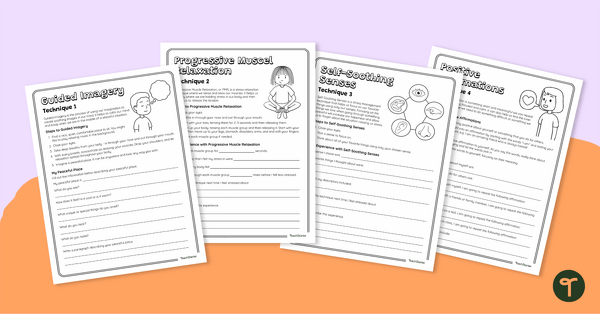
Stress Management Toolkit for Kids
Practice stress management techniques with your students with this set of 4 worksheets, which form a stress management toolkit for reference.
- Plus Plan
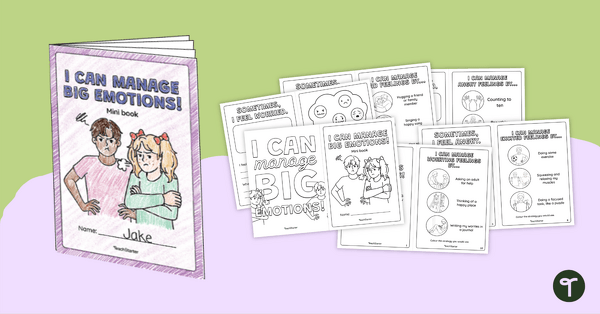
Managing Emotions Mini-Book
Help your early years students explore and manage their emotional responses with this printable mini-book.
- Plus Plan
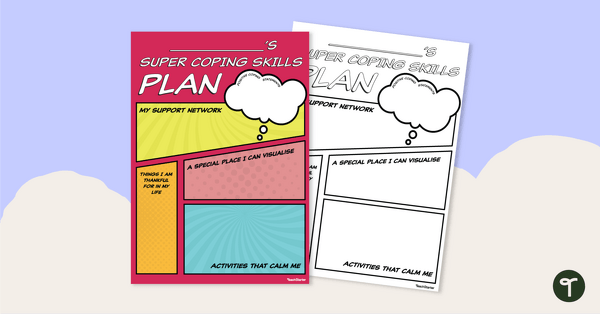
My Personal Coping Skills Plan – Template
Ensure your students have a personalised coping plan for those challenging moments with this comic-themed printable template.
- Plus Plan
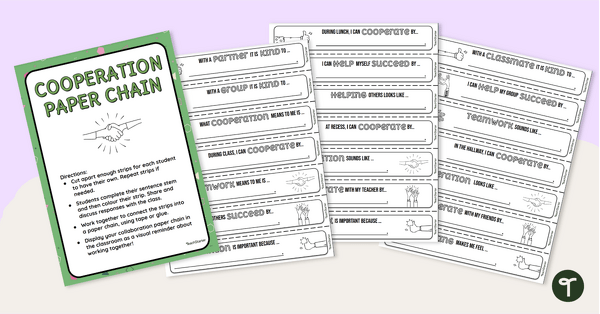
Cooperation Paper Chain
Work as a team to create a paper chain to serve as a reminder of the importance of cooperation.
- Plus Plan
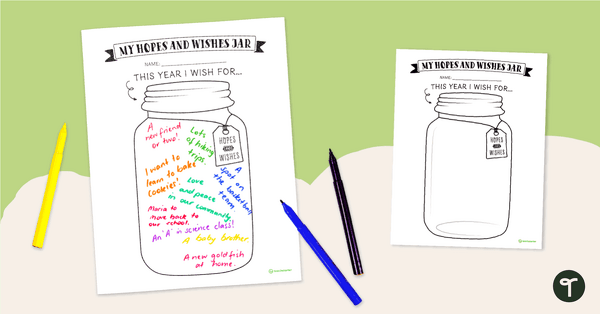
My Hopes and Wishes Jar - Goal-Setting Activity
Sets goals for the new school year with a goal-setting activity.
- Free Plan
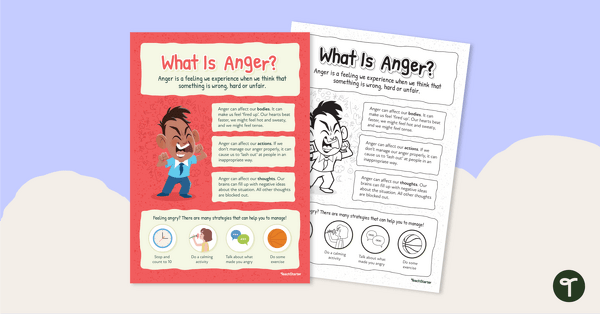
What Is Anger? Poster
Teach your students to understand and manage anger with this informative classroom display poster.
- Free Plan

Managing Anxiety Worksheet (Upper Primary)
Help older students identify and manage anxious feelings with this self-reflection and action plan worksheet.
- Free Plan

What Is Anxiety? Poster
Teach your students to understand and manage anxious feelings with this informative classroom display poster.
- Plus Plan

Calming Down Strategies Classroom Poster
Make calming down strategies easily accessible for your students with this classroom display poster.
- Plus Plan
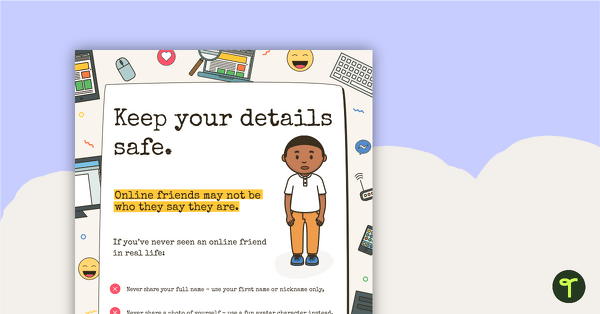
Cyber Safety Poster – Keep Your Details Safe
A cyber safety poster to help the students understand correct online behaviour.
- Plus Plan
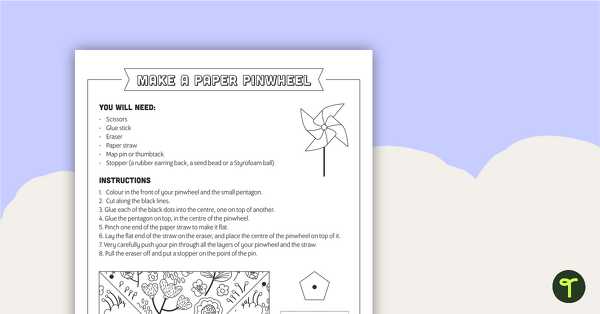
Mindful Colouring and Breathing – Pinwheel Activity
Practise mindfulness through colouring and breathing with this paper pinwheel craft activity.
- Free Plan
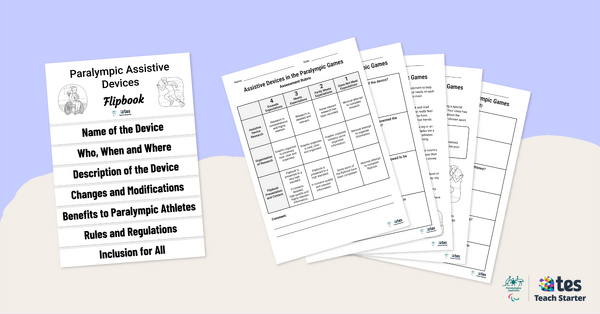
Assistive Devices in the Paralympic Games – Inquiry-Based Project
Have your students investigate the assistive devices used by Paralympians with this inquiry-based learning project.
- Free Plan
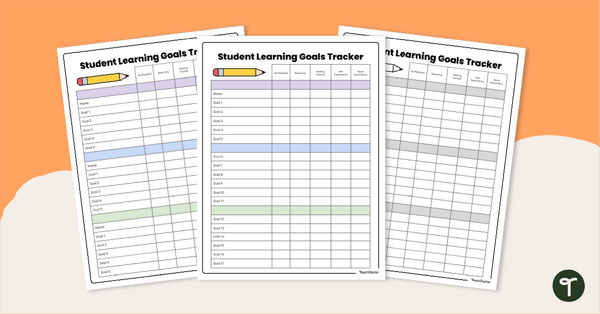
Student Learning Goals Tracker
Identify and track student goal achievement with an editable and printable student goal-tracking template.
- Plus Plan
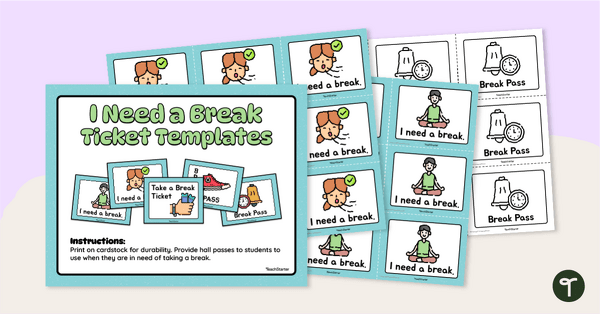
I Need a Break! Card Templates
Help your students regulate their emotions by presenting them with an ‘I Need a Break!’ Card for a few minutes of downtime.
- Plus Plan
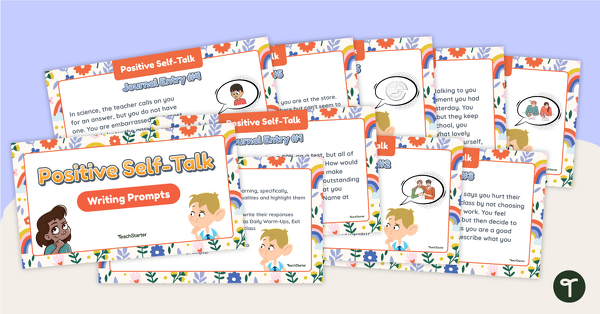
Positive Self-Talk Writing Prompts (Teaching Slides)
Use this set of 15 positive self-talk scenarios as writing prompts to expand your students ability to be kind to themselves!
- Plus Plan
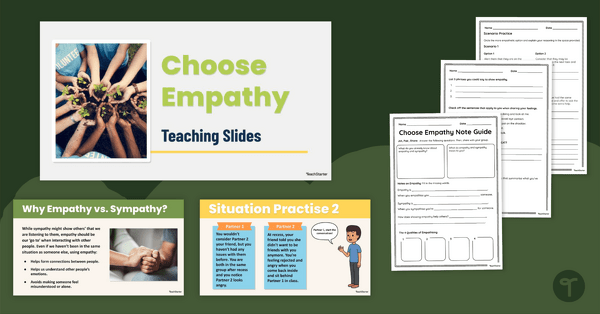
Choose Empathy Teaching Slides & Note Guide
Help your students understand the difference between empathy and sympathy while learning how to be empathetic with this set of teaching slides and note guide.
- Plus Plan
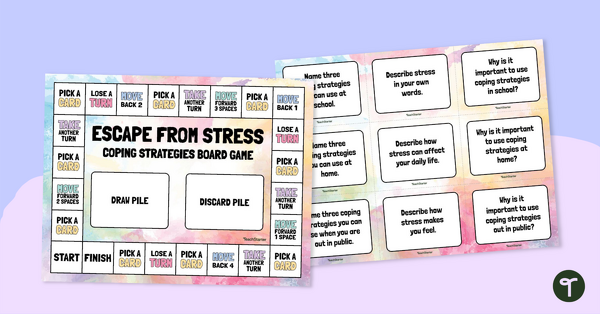
Escape from Stress Board Game
Introduce this board game in your classroom to help students practise identifying which stress management coping strategies to use and when.
- Plus Plan
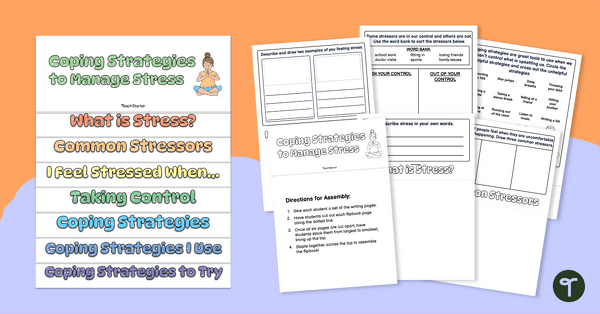
Coping Strategies to Manage Stress Flipbook
Get crafty with your students creating this colourful flip book containing their own preferences of strategies for managing stress.
- Plus Plan
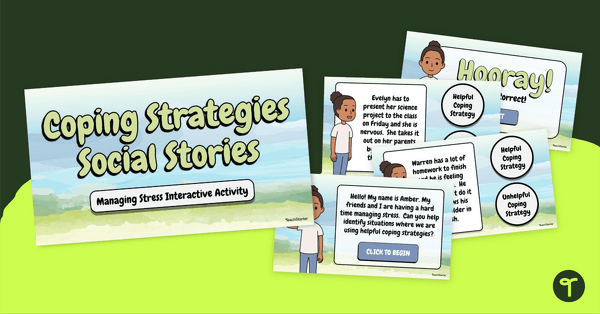
Managing Stress Social Stories Interactive Activity
Share this relaxing and calming interactive activity with your students to help them to differentiate between helpful and unhelpful strategies for coping with stress.
- Free Plan
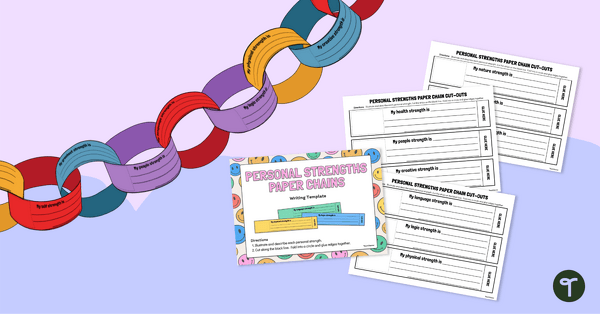
Personal Strengths Paper Chains
Explore your individual strengths with this fun paper chain activity.
- Free Plan
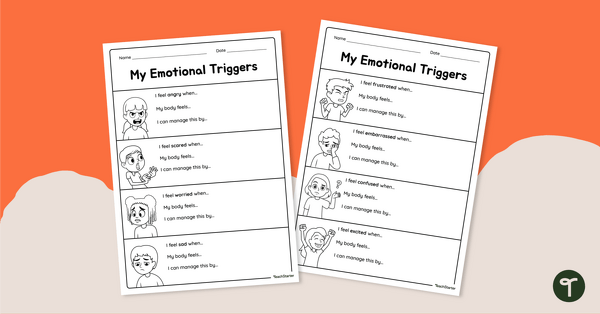
My Emotional Triggers Worksheet
Help your early years students explore the situations that trigger them to experience certain emotional responses with this 2-page emotional triggers worksheet.
- Plus Plan

Safe or Unsafe Scenario Task Cards
Discuss safe and unsafe situations with this set of scenario task cards.
- Plus Plan
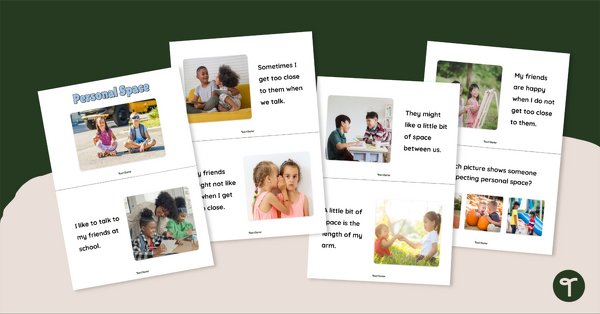
Social Stories - Personal Space
Learn about the importance of leaving personal space when interacting with others with this personal space social story.
- Plus Plan
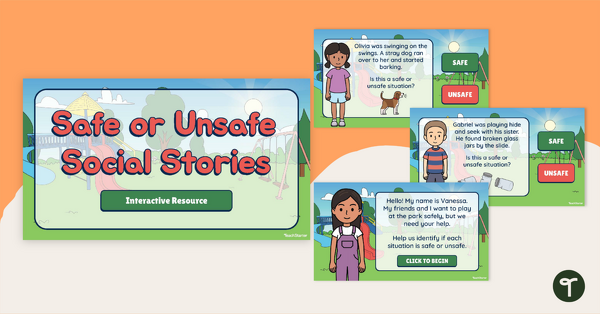
Safe or Unsafe Social Stories Interactive Activity
Discuss safe and unsafe scenarios with this interactive activity.
- Social Emotional Learning Templates
- Social Emotional Learning Worksheets
- Social Emotional Learning Posters
- Social Emotional Learning Games
- Social Emotional Learning Labels, Signs & Decorations
- Social Emotional Learning Teaching Presentations
- Social Emotional Learning for Preschool/Kindergarten
- Social Emotional Learning for Foundation Year
- Social Emotional Learning for Year 1
- Social Emotional Learning for Year 2
- Social Emotional Learning for Year 3
- Social Emotional Learning for Year 4
- Social Emotional Learning for Year 5
- Social Emotional Learning for Year 6
- Social Emotional Learning for Year 7